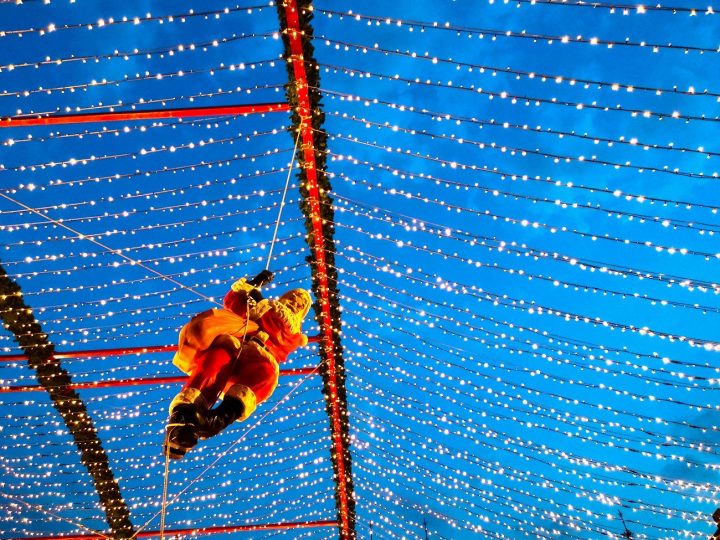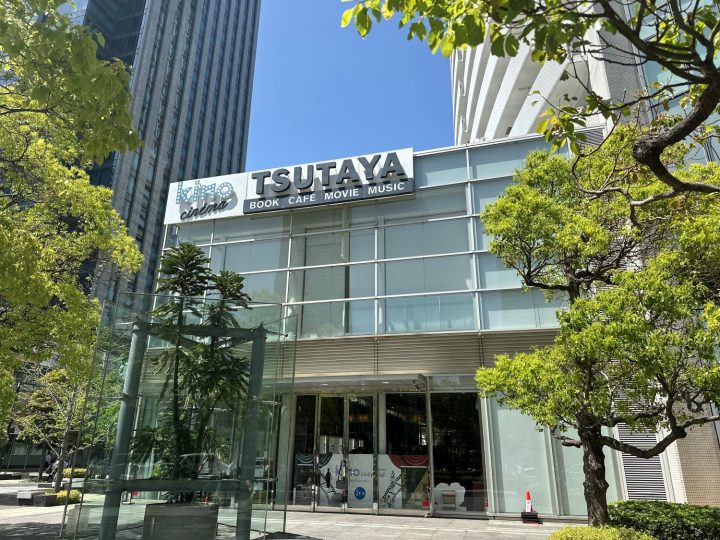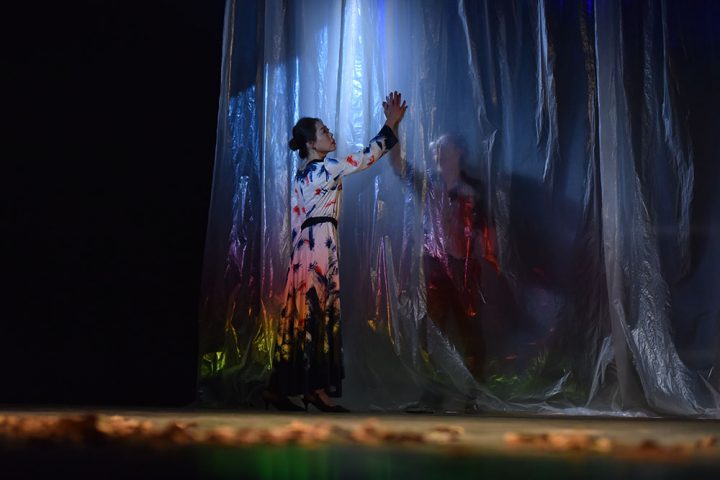From the Kita-Kamakura Atelier ~Prayers from Kannon Painter, Cotton Flower~

It's a 10-minute walk from Kita-Kamakura Station. You'll walk up a hill, passing residential areas lined with lush greenery. After passing through a narrow path, you'll arrive at a building that feels like a hideaway surrounded by nature. When you open the door with "kokotama gallery" written on it, a white dog will greet you cheerfully, like a gatekeeper.
"I was born and raised in Tokyo, and have been based in Kita-Kamakura since 2015.
The first thing I noticed when I moved to Kita-Kamakura was that the mountains are much closer to my life than I had imagined.
So says Yuuka, the owner of kokotama gallery and a Kannon painter based in Kita-Kamakura. Cherry blossoms that stand out against a gold background and beautifully blooming lotus flowers. Her works, created in this land beloved by nature, allow you to enjoy the flowers and scenery of the four seasons.
"Rather than artificial nature in the city, there is Satoyama, a place that has been loved by locals for a long time, and I was moved by the fact that I can feel the changing of the seasons every day through the trees and flowers.
The sky is wide and you can see the moon and stars clearly at night. The wind from the mountains and the sounds of the birds and insects are very soothing. I think it's the perfect place for a creative environment.
The sea is just a short distance away, and of course it's also fun to visit the many historical temples and shrines.
And above all, the people in the community are so kind and always helpful. It really brings home to me the importance of connections between people."
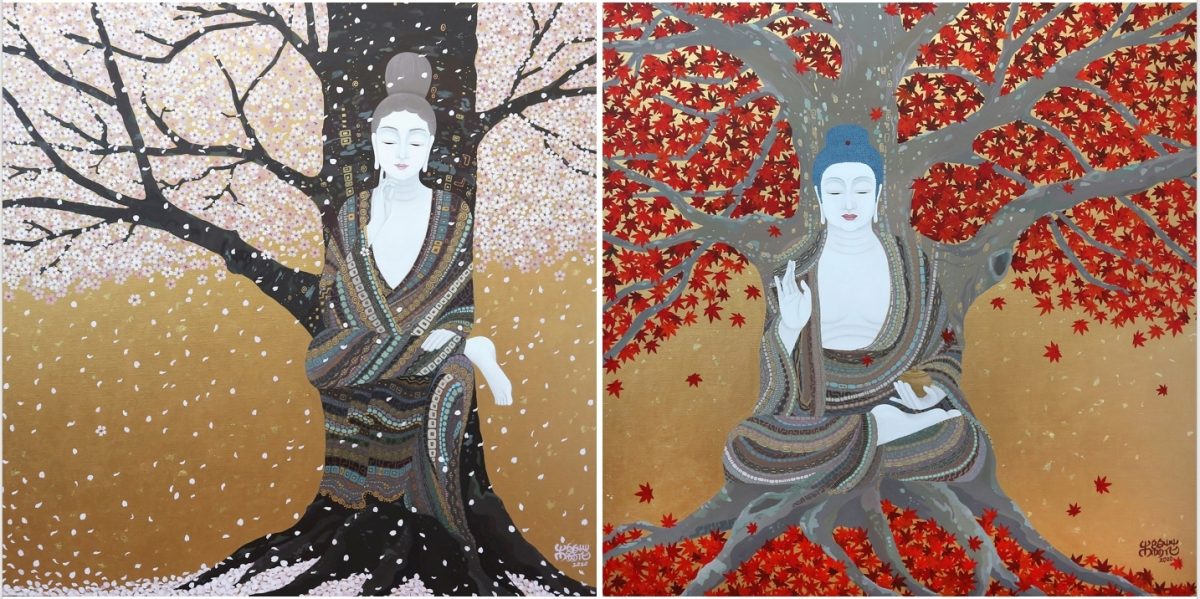
Although she was born and raised in Tokyo, she attended high school in Yokohama, and Kanagawa Prefecture is a place that holds many memories for her as a student. How did the scenery of Yokohama appear to her?
"When I was in high school, I commuted to Motomachi from Tokyo every day.
The hill that ran through the foreign cemetery from the station to my school was steep, and I remember being out of breath every day while climbing it.
The area where I spent my student days is home to the foreign cemetery, Western-style buildings in Yamate, and Chinatown, and gives the impression of being a stylish, artistic town where you can feel the atmosphere of foreign countries close by.
The ships in the harbor, the flower-filled parks, the Red Brick Warehouse, and everywhere else are picturesque. I also love the romantic moon over the sea, the orange-tinged night sky over the harbor, and the bustling neon lights of Minato Mirai.
Recently, the Yokohama Triennale has been a hot topic, and I think that many people are becoming interested in art. When I had a solo exhibition at a gallery in Motomachi, I was impressed by how everyone there seemed to enjoy art in a very casual way.
After graduating from high school, he left Japan to go to college in the U.S. His life abroad gave him the opportunity to reexamine Japan and his own future, and he told us about the feelings he had towards Kannon Bodhisattva.
"Studying abroad in the US at university gave me the opportunity to look at my own country from a different perspective.
When foreigners asked me about Japan, there was a lot I didn't know, so I wanted to learn more about Japan and share it with more people, so I explored this by visiting shrines and temples, learning how to wear kimono and Japanese painting.
The one that attracted me the most was the Kannon statue.
I found Kannon very familiar because of its similar appearance to humans, and when I learned that there are many different forms of Kannon, as well as other deities such as Tathagata, Myo-o and Tenbu, I became even more interested.
More than anything, when I stood face to face with the Kannon, my heart was warmed by its profound beauty, its capacity for generosity, and the many layers of prayer that reside within it that have transcended the ages.
"I was in the middle of job hunting and worried about my future career when the 3/11 earthquake happened. Prayers from all over the world were sent to Japan, and I was deeply moved by the fact that those prayers have nothing to do with country or religion. This strongly influenced my decision to become a painter."
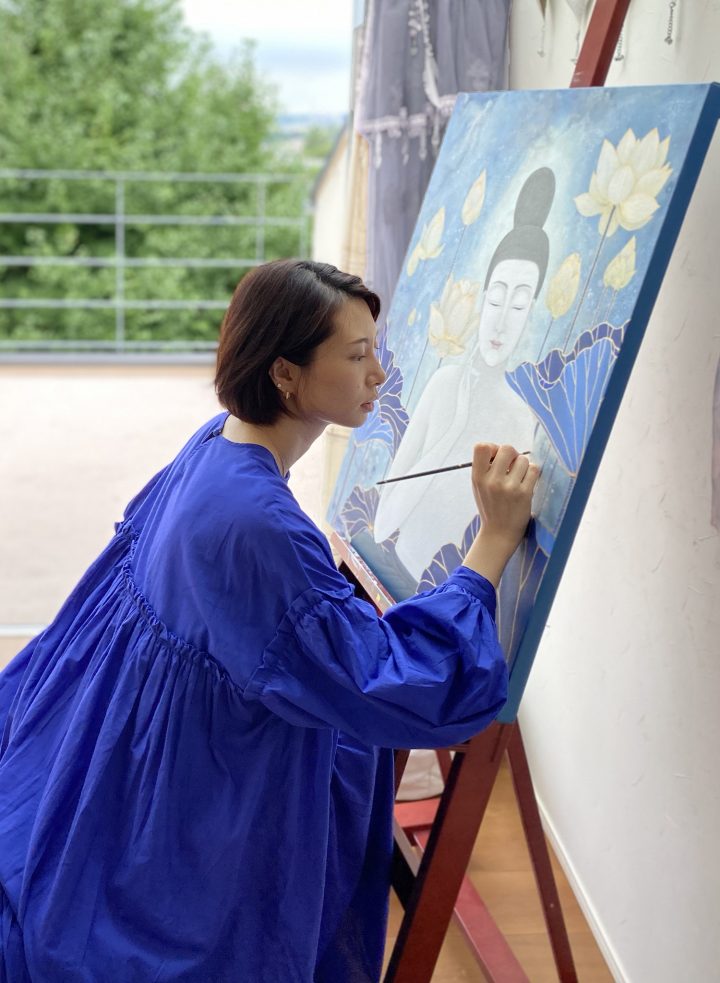
There are probably many people who have learned about the profession of Kannon painter for the first time through this column. For me, Kannon is an absolute being, and I have never had the opportunity to come into contact with it from the perspective of art. I felt a little nervous, wondering whether I would be able to understand it.
Despite my worries, the Kannon painted on canvases of various sizes, surrounded by gentle colors and beautiful flowers, smiles quietly and enters my heart. I was surprised at how many different expressions can be seen through just that one smile. Compassion, beauty, grace, and love. Until now, I had always had an image of Kannon as being "quiet," but the Kannon she painted coexists with the seasons and nature, and "moves" in colorful scenes.
"I think there are many people who have no interest in Kannon or don't understand it very well.
I hope that people will enjoy my works freely and with ease, without feeling that they have to be viewed in a certain way just because they are Kannon statues.
At each solo exhibition, I try to convey a certain message through a theme, but I hope that my artworks will resonate with everyone. I hope that everyone will appreciate the way they interpret my work and cherish the emotions they feel.
"Please feel free to view it however you like." Just as these words suggest, the work itself tells us, "You can enjoy it however you like."
For example, when you visit a Western art museum, you can enjoy many paintings as art without knowing that they have a religious background. The Kannon statues painted by Momeka are a perfect example of this. Even those who are not familiar with Buddhism can enjoy the work without feeling intimidated, and can appreciate it even more deeply by gaining some knowledge.
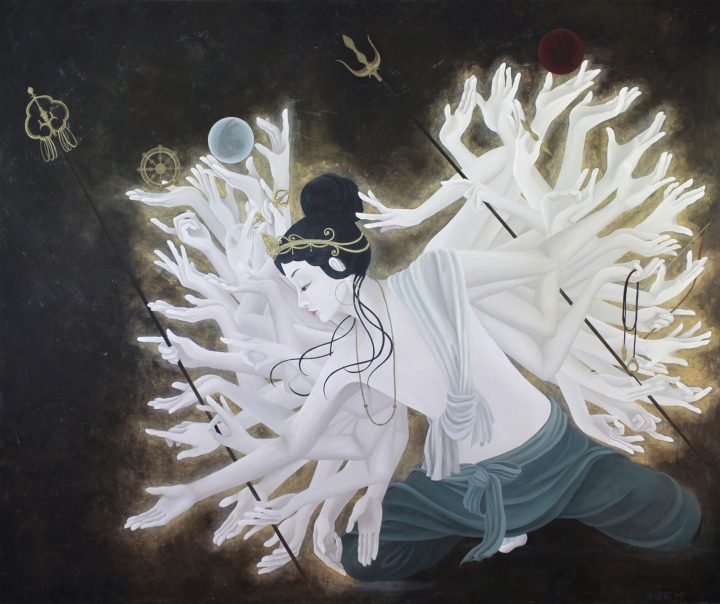
One piece that symbolizes this friendliness and freedom is “Kokotama,” designed with a cute, round shape.
"Kokotama is written as "jewel of the heart" and pronounced "kokotama".
In Buddhism it is a jewel, in Shinto it is a peach to ward off evil, and in nature it is shaped like a bud or teardrop.
By painting these plump, warm shapes, I hoped to create a piece that people could hold in their hands and enjoy looking at up close.
Kokotama was born with the hope that this piece would be a beautiful pearl that would honestly reflect the heart of the person who holds it in their hands."
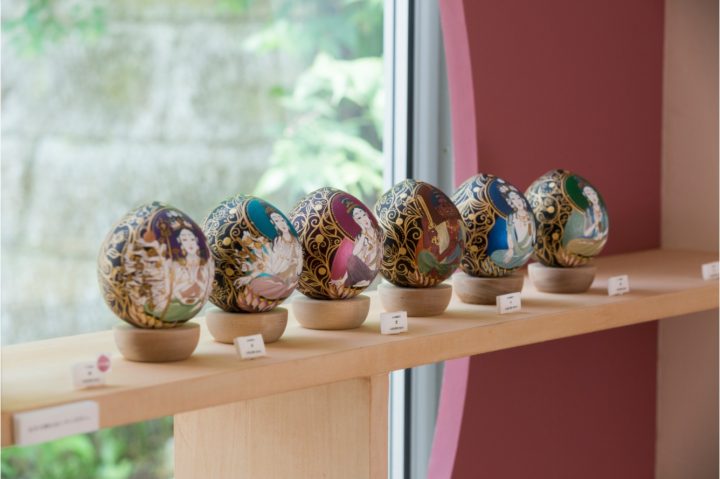
Not only on canvas, but also through works such as wooden spheres, visitors can experience Buddhism, which is deeply rooted in the country, from various perspectives.
And the Kannon Bodhisattva that Momeka draws is not just friendly, but also has the mercy and strength that only Kannon Bodhisattva can have. When I asked her about the thoughts that she holds dear when working on her art, she told me about her sincere feelings towards Kannon Bodhisattva.
"I'm grateful to have the opportunity to work as a Kannon painter.
I think that it is difficult to draw Kannon just by wanting to draw it. Knowledge is important, but visiting the temple with your own feet, experiencing it with your own body, and facing the Kannon will gradually lead to a step towards creating a work.
What is the history of each temple and Kannon statue, what are the feelings of the local people who have cherished them, and what is the area like? I take my time to research and visit the temples and Kannon statues, and delve into the things that interest me and that interest me. When it comes to Buddhist statues, it's best to see them in person, rather than in photos or videos, and most of all, you can learn a lot by learning about the temple and area they are in.
If I hit a dead end at any point in this research, I sometimes think to myself, "Now is not the time to paint this Kannon statue, so I don't push myself too hard," and give up. Up until now, I have been able to paint many Kannon statues through chance or mysterious connections, and I treasure these encounters and connections, carefully painting each piece that I am able to paint at the moment. I think it is special to be able to paint Kannon, who is the object of prayer, so I would like to continue to do my best as long as I am allowed to do so, with gratitude in my heart for the opportunity to paint every day.
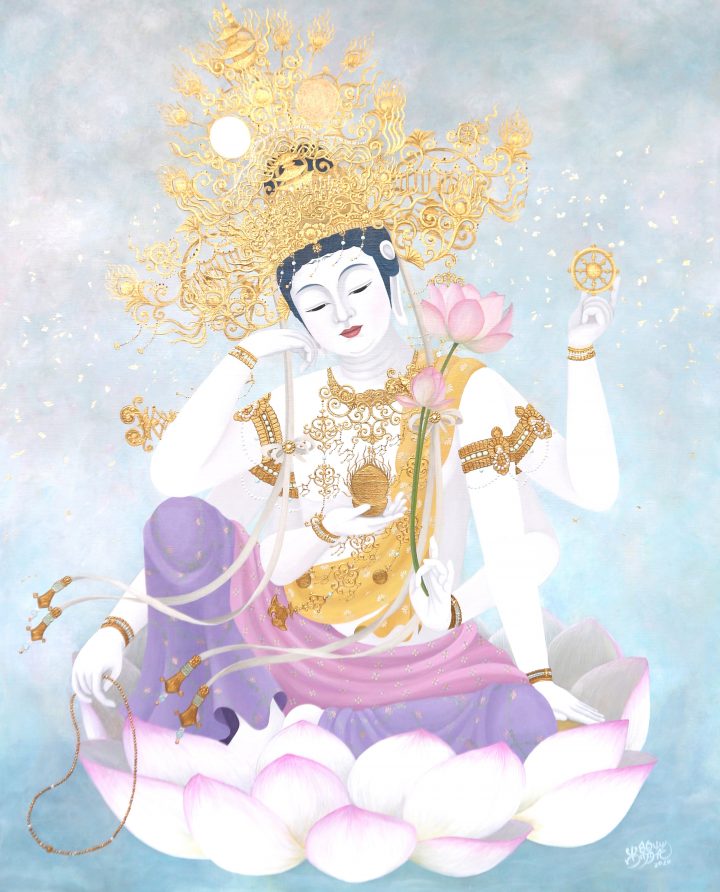
It is precisely because they have valued and nurtured the idea of once-in-a-lifetime encounters that they have been able to undertake a wide range of activities, including collaborative projects with artists and cafes. We asked Moneka about her outlook for the future.
"As a Kannon painter, if there is anything I can do to contribute to the Kannon statue and temples, I would like to do so proactively.
Last year, I was asked by Miidera Temple to draw the Gohonzon for the first time.
Until then, I had never painted a specific Buddhist statue as a base, so it was a difficult challenge, but it was a very valuable experience.
Later, I had the opportunity to paint the principal image at Hasedera Temple in Nara.
If I am given the opportunity to draw the Gohonzon again, I would definitely like to try it again.
Once the coronavirus pandemic is over, I hope to hold a solo exhibition in places I haven't had the chance to before and to share my work with the world. I have big dreams."
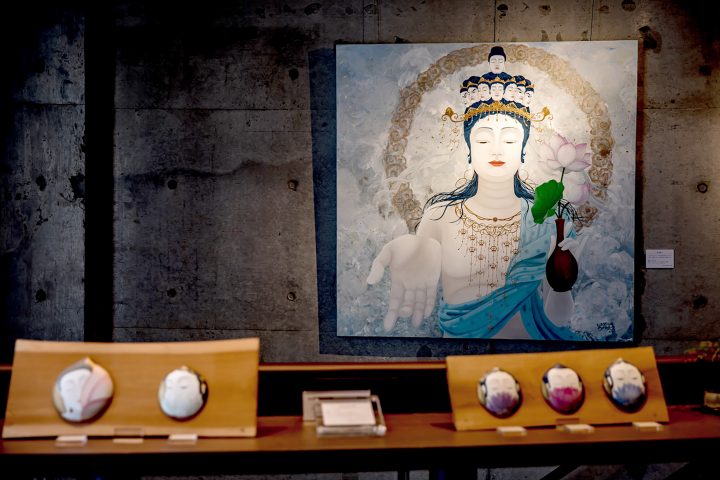
She concluded by explaining what led her to become a Kannon painter:
"Anyone can pray. And the feeling of praying for someone else's happiness has not changed from the past to the present. I believe that the Buddhist statues that have been cherished for many years are imbued with that spirit of prayer.
My first step as a Kannon painter was my strong desire to create artwork that would touch as many people as possible with that prayerful spirit and connect it to the future.”
The works of Moneka, who has embarked on her career as a Kannon painter, and the prayers she depicts touch people's hearts, and those prayers are then passed on to someone else. Now that prayers are needed all over the world, I too quietly pray that her works will reach as many people as possible around the world.
【profile】
Cotton flower (Yuka)
Kannon Painter
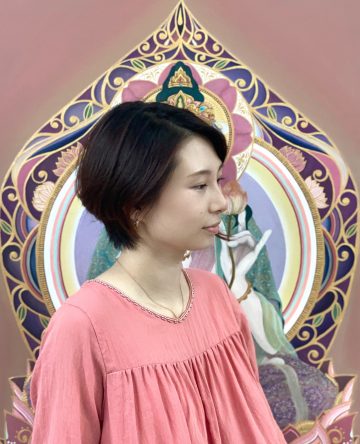
Born in Tokyo.
She grew up in a creative environment with parents who were active in the fashion industry, and at university she majored in painting in order to be exposed to a wide range of sensibilities and broaden her worldview.
He studied at BOSTON UNIVERSITY in his first year and transferred to NEW YORK UNIVERSITY in his second year.
In 2011, he graduated with honors from NEW YORK UNIVERSITY with a Bachelor of Fine Arts.
After graduating from university and returning to Japan, he worked as a designer and illustrator, but felt his desire for painting growing stronger, so in 2013 he decided to pursue a career as a painter and held his first solo exhibition.
After leaving Japan and living abroad, he had the opportunity to see Japan from a different perspective and was once again fascinated by Japanese traditions and culture. He was moved by the Kannon statue, which has long been loved and cherished by people, and the spirit of prayer that has been handed down since ancient times, and felt that he wanted to paint a picture that resonated with that heart. With his colorful sensibility and expressiveness, he painted the Kannon, which represents the spirit of prayer and harmony that goes beyond the concept of Buddhism.
In addition to painting, she also devotes herself to creating unique three-dimensional works called kokotama (heart bead). Kokotama is named after the meaning of "a beautiful single bead that honestly reflects one's heart", and the pictures are painted on a wooden bead shaped like a jewel.
Each piece is carefully crafted with love and care, with the hope that it will not just be a piece to look at, but one that makes you want to hold it in your hands and look at it.
Not only painting, but also collaborating with artists and cafes to expand his worldview into various fields. He is currently based in his own gallery, kokotama gallery, which opened in Kita-Kamakura in 2015.
Instagram: kokotama_youka
Twitter: @kokotamayouka
Facebook: kokotamayouka
Website: https://www.youkamiuryu.com/
